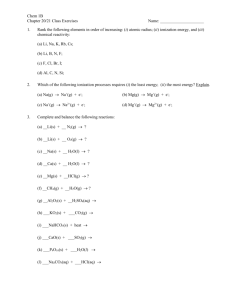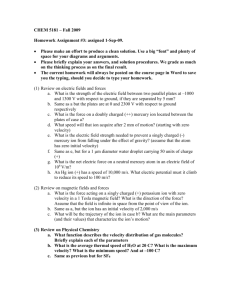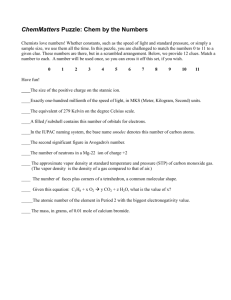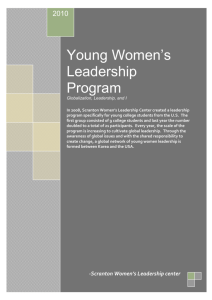building solids
advertisement
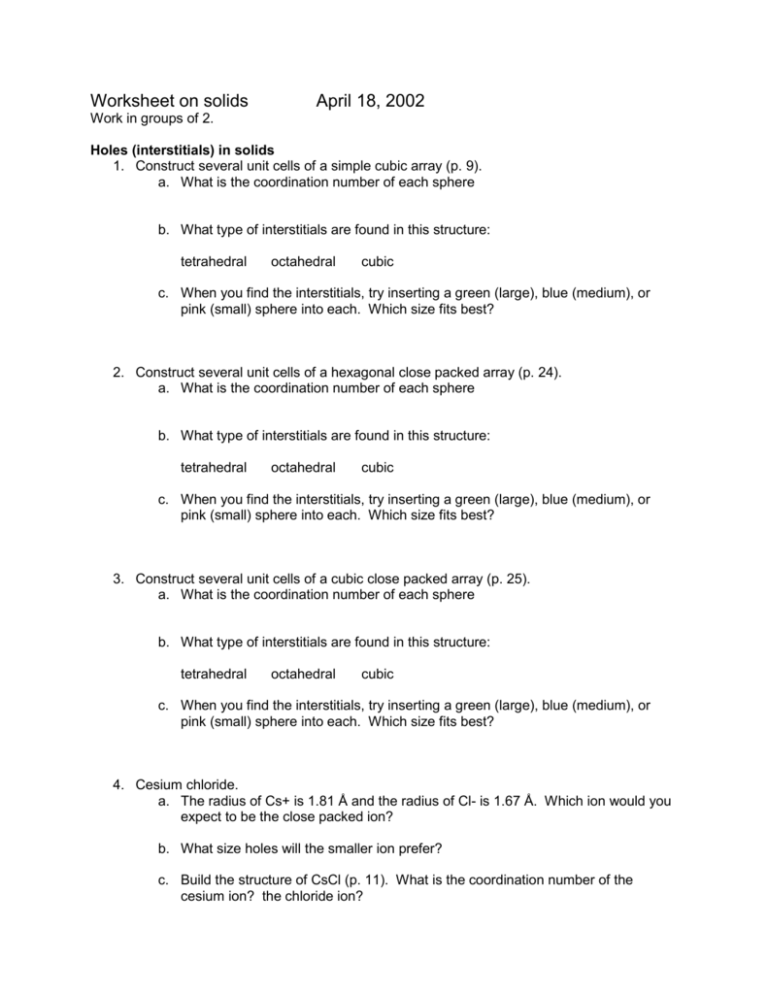
Worksheet on solids April 18, 2002 Work in groups of 2. Holes (interstitials) in solids 1. Construct several unit cells of a simple cubic array (p. 9). a. What is the coordination number of each sphere b. What type of interstitials are found in this structure: tetrahedral octahedral cubic c. When you find the interstitials, try inserting a green (large), blue (medium), or pink (small) sphere into each. Which size fits best? 2. Construct several unit cells of a hexagonal close packed array (p. 24). a. What is the coordination number of each sphere b. What type of interstitials are found in this structure: tetrahedral octahedral cubic c. When you find the interstitials, try inserting a green (large), blue (medium), or pink (small) sphere into each. Which size fits best? 3. Construct several unit cells of a cubic close packed array (p. 25). a. What is the coordination number of each sphere b. What type of interstitials are found in this structure: tetrahedral octahedral cubic c. When you find the interstitials, try inserting a green (large), blue (medium), or pink (small) sphere into each. Which size fits best? 4. Cesium chloride. a. The radius of Cs+ is 1.81 Å and the radius of Cl- is 1.67 Å. Which ion would you expect to be the close packed ion? b. What size holes will the smaller ion prefer? c. Build the structure of CsCl (p. 11). What is the coordination number of the cesium ion? the chloride ion? d. Describe the packing of the largest ions. (sc, hcp, ccp) 5. Sodium chloride. a. The radius of Na+ is 1.16 Å and the radius of Cl- is 1.67 Å. Which ion would you expect to be the close packed ion? b. What size holes will the smaller ion prefer? c. Build the structure of NaCl (p. 31). What is the coordination number of the sodium ion? the chloride ion? d. What percentage of the interstitial sites (only consider the type in part b) is filled? e. Describe the packing of the largest ions. (sc, hcp, ccp) 6. Cadmium iodide. a. Write the chemical formula for cadmium iodide. b. The radius of Cd2+ is 1.09 Å and the radius of I- is 2.06 Å. Which ion would you expect to be the close packed ion? c. What size holes will the smaller ion prefer? d. Based on the formula and what you observed with cadmium iodide, what percentage of the interstitial sites do you expect to be filled? e. Build the structure of cadmium iodide (p. 36). What is the coordination number of the cadmium ion? the iodide ion? f. What percentage of the interstitial sites (only consider the type in part c) is filled? g. Describe the packing of the largest ions. (sc, hcp, ccp) 7. Zinc blende - sphalerite. a. Write the chemical formula for zinc sulfide. b. The radius of Zn2+ is 0.74 Å and the radius of S2- is 1.70 Å. Which ion would you expect to be the close packed ion? c. What size holes will the smaller ion prefer? d. Build the structure of sphaerlite (p. 49). What is the coordination number of the zinc ion? the sulfide ion? e. What percentage of the interstitial sites (only consider the type in part c) is filled? f. Describe the packing of the largest ions. (sc, hcp, ccp) 8. Spinel structures a. The spinel structure type represents an important class of minerals. It contains cations in both octahedral and tetrahedral sites. The general formula of a spinel is AIIB2IIIO4 where the AII cations occupy one-eighth of the tetrahedral holes and the BIII cations occupy one-half of the octahedral holes. b. MgAl2O4 is a mineral that has the spinel structure. The magnesium ion has tetrahedral coordination and the aluminum ion has octahedral coordination. Based on your knowledge of periodic trends: i. Which ion is smaller? ii. Predict which ion would go into the Oh and Td holes based on size. iii. Is this what you observe? Is the spinel structure consistent with the radius ration rule? c. Work with your model to locate the direction of close packing of oxide ions. d. In spinels, crystal field stabilization energies play a large role in the location of cations. You will get to work with this in more detail on the problem set.

